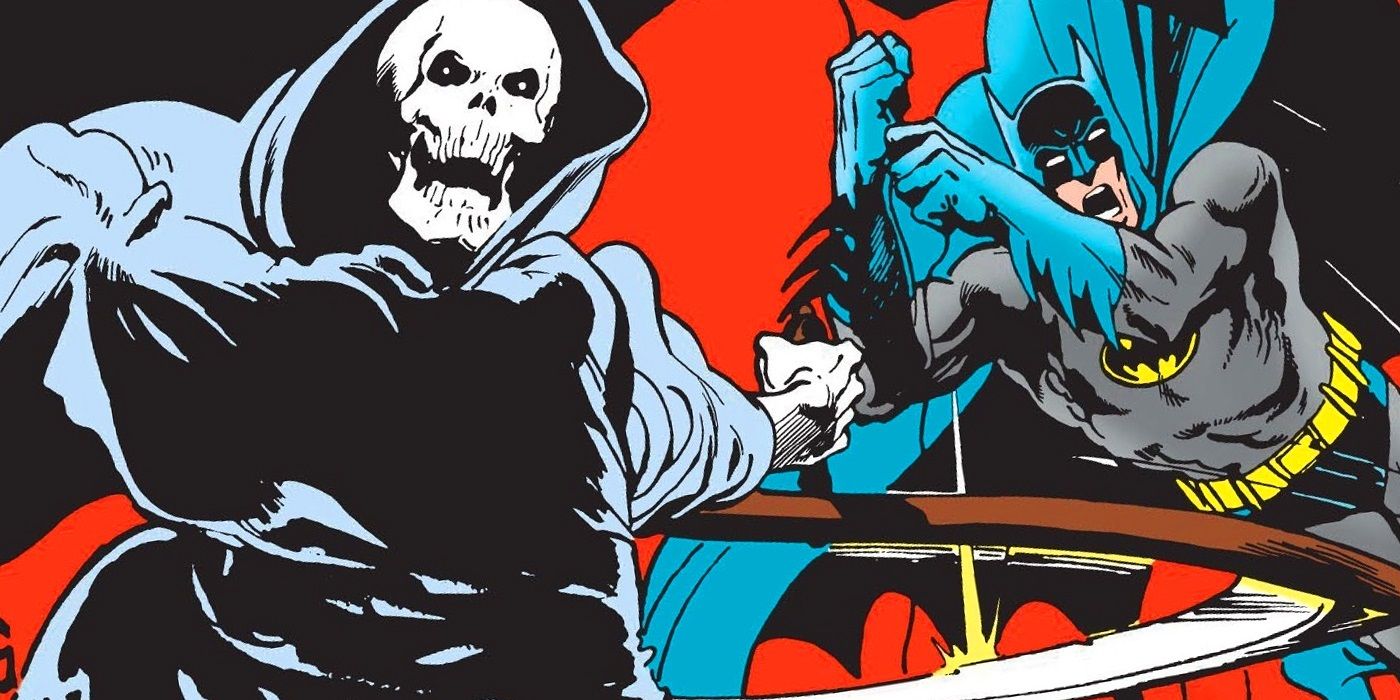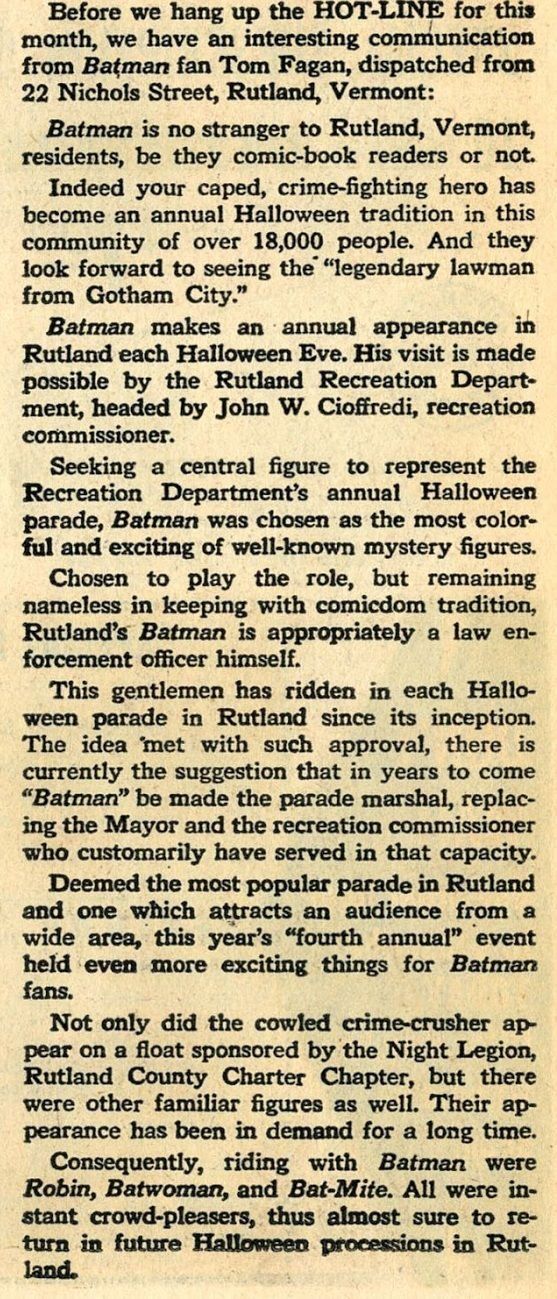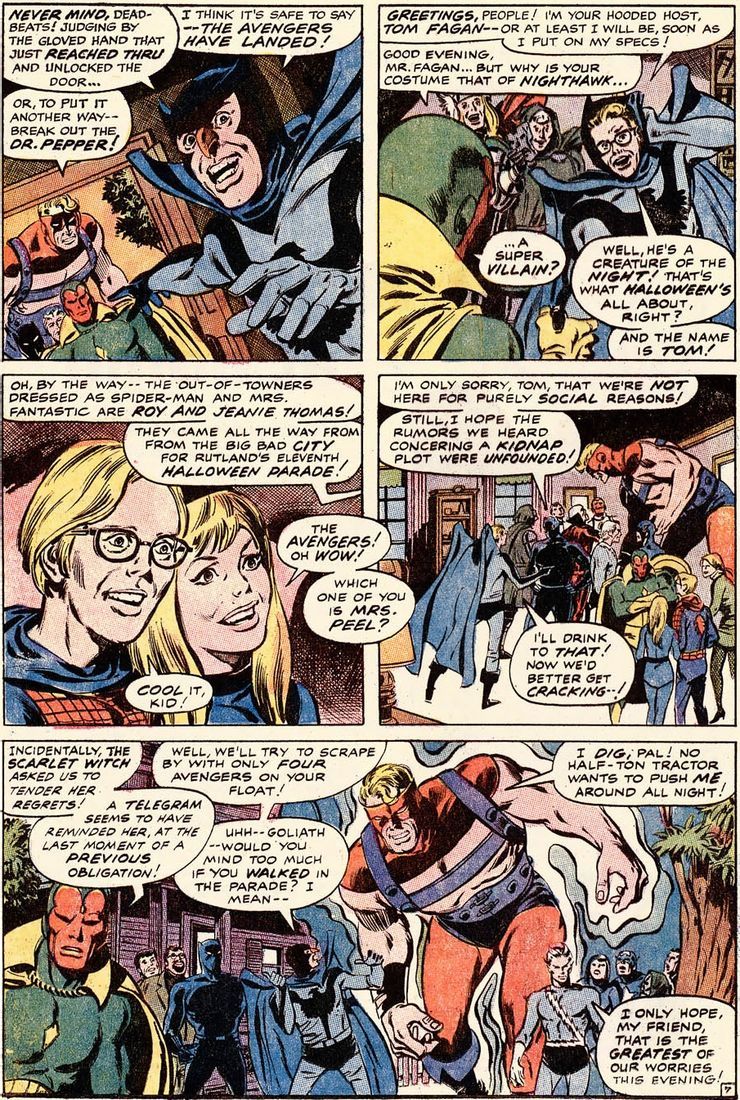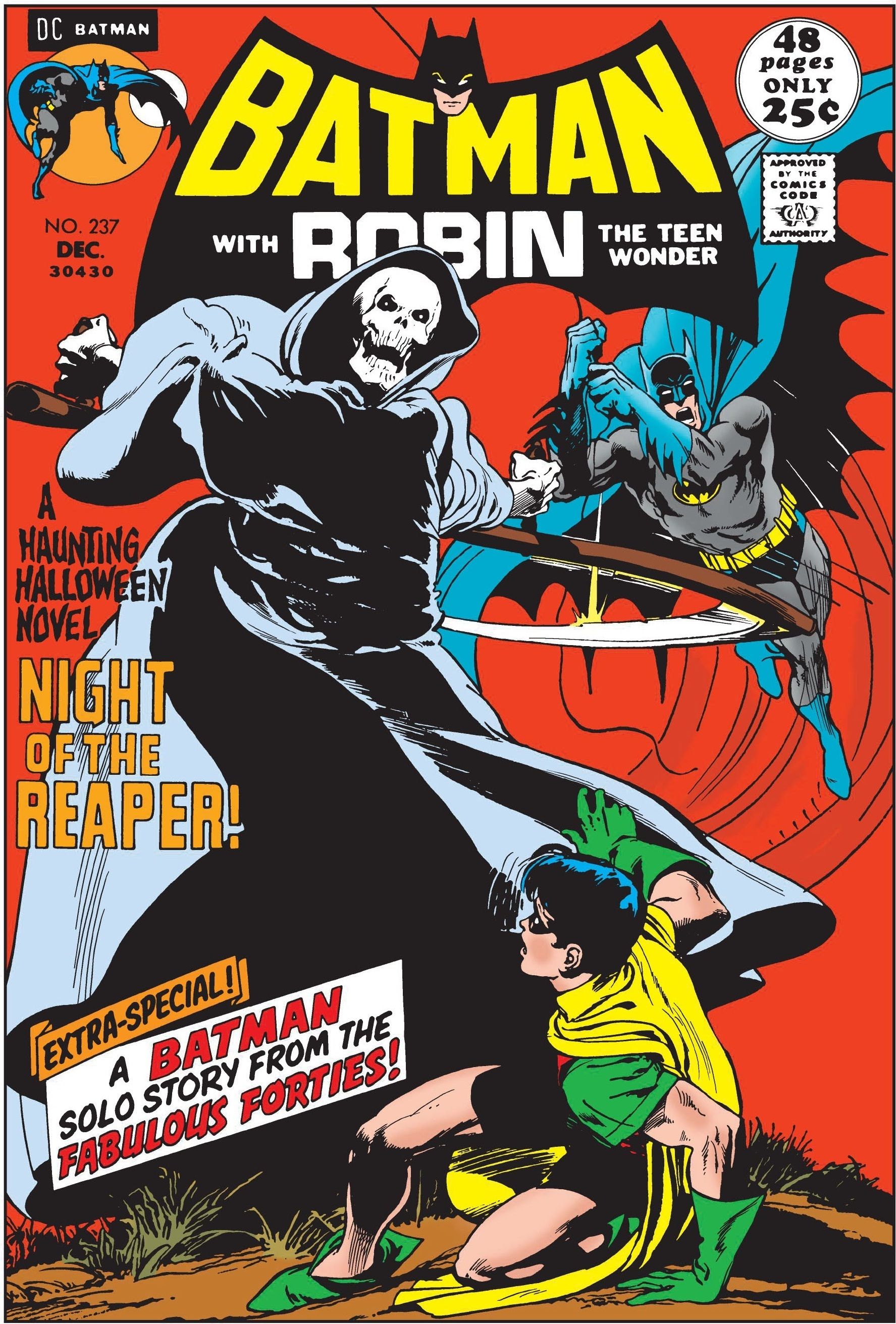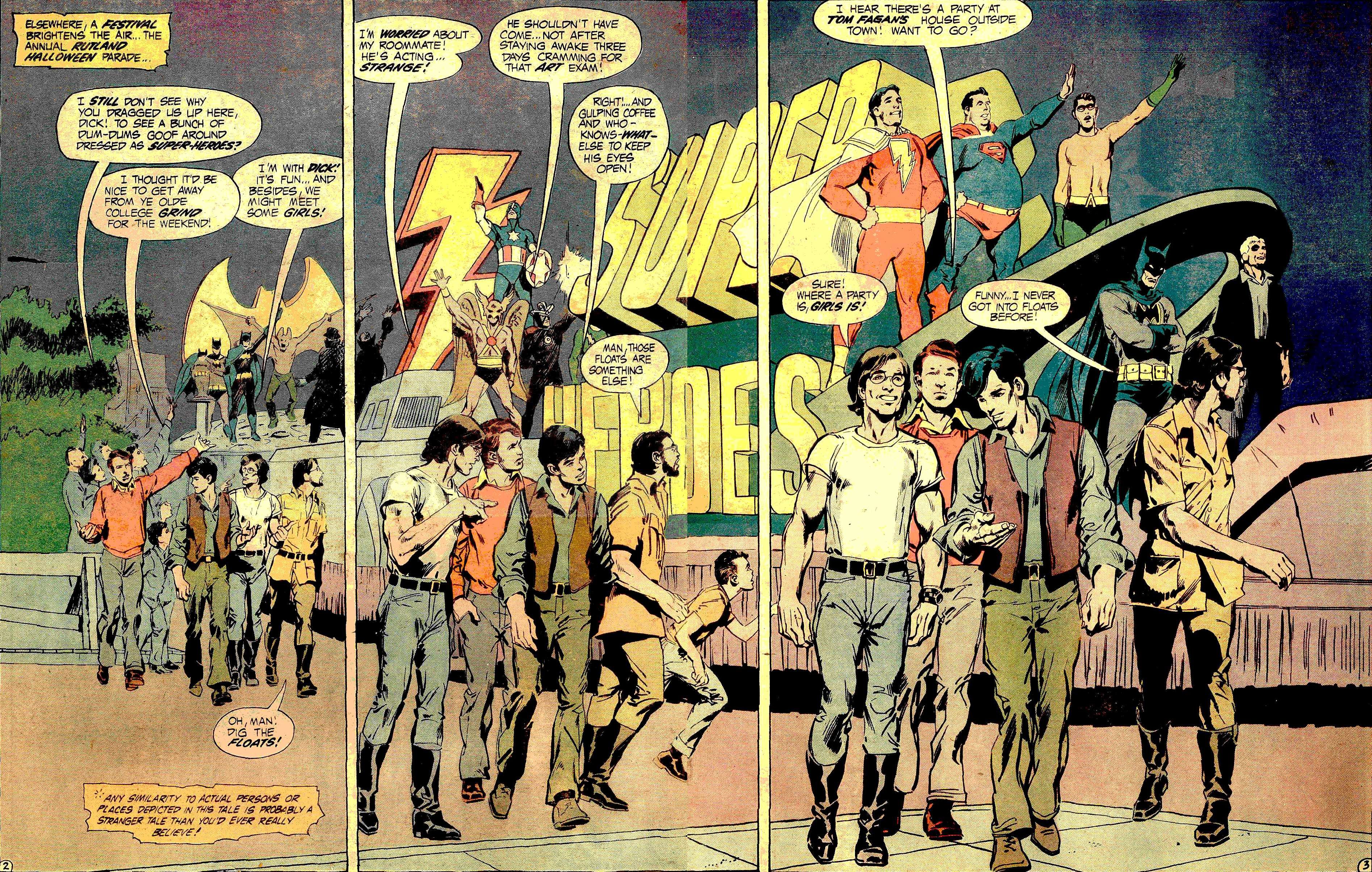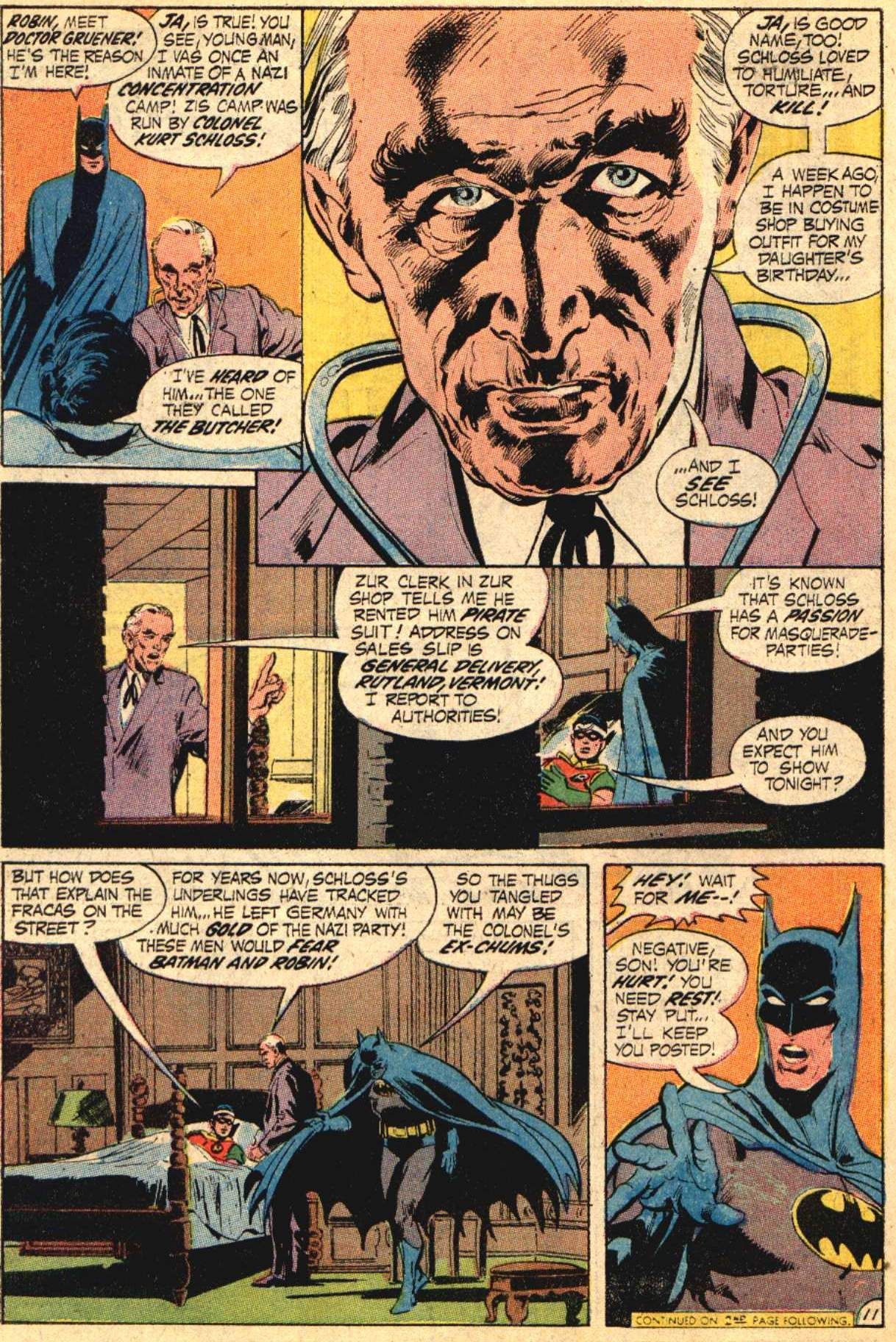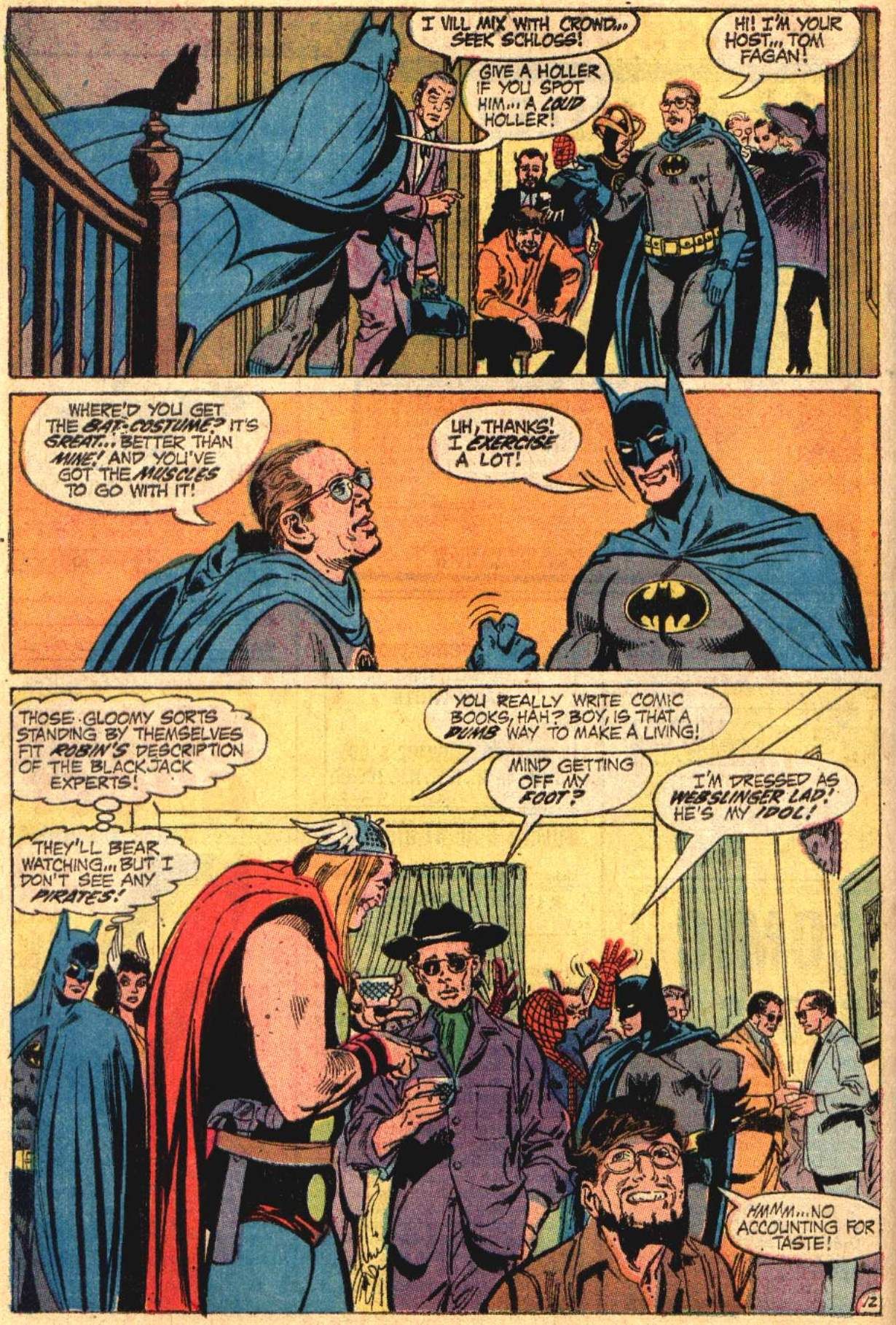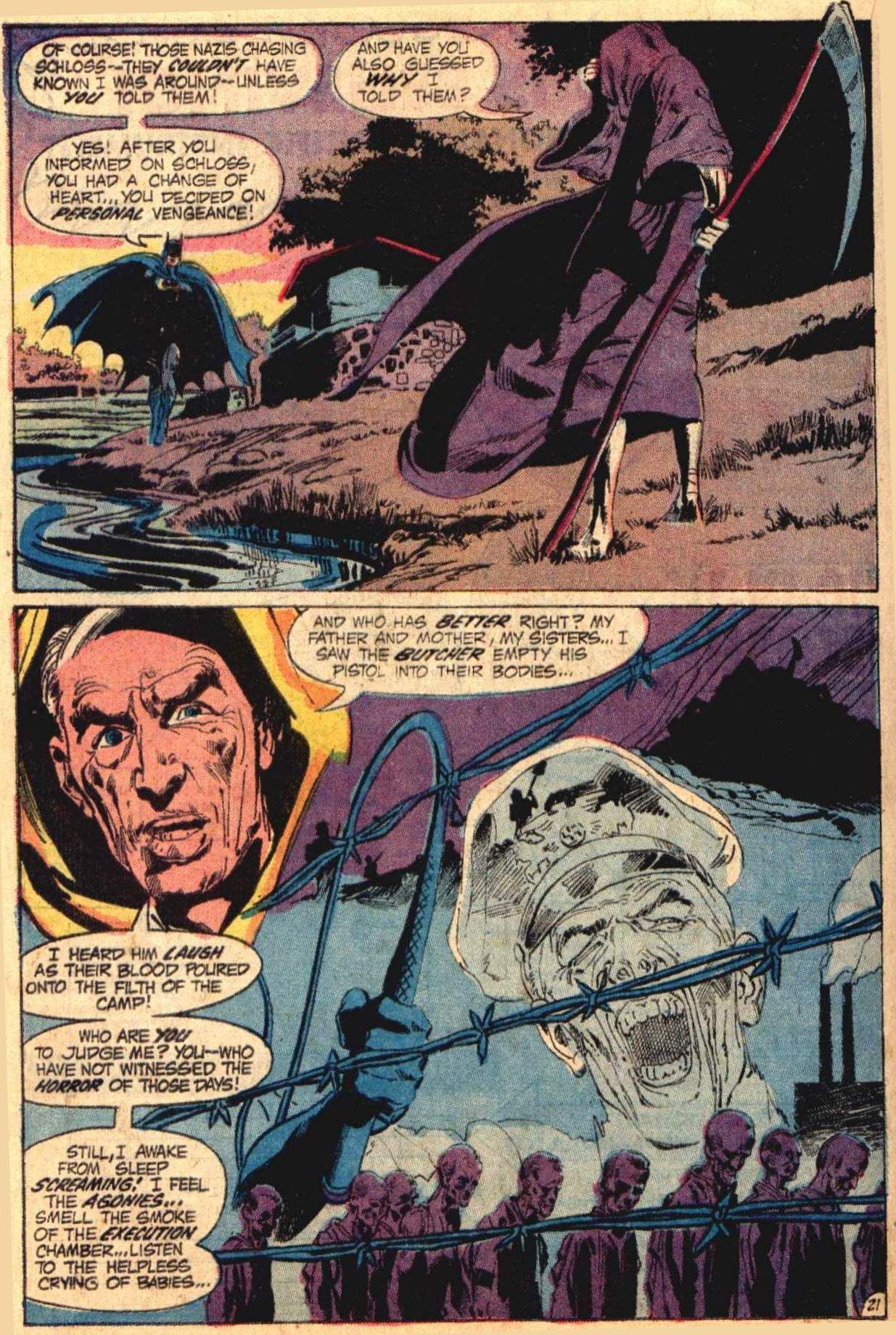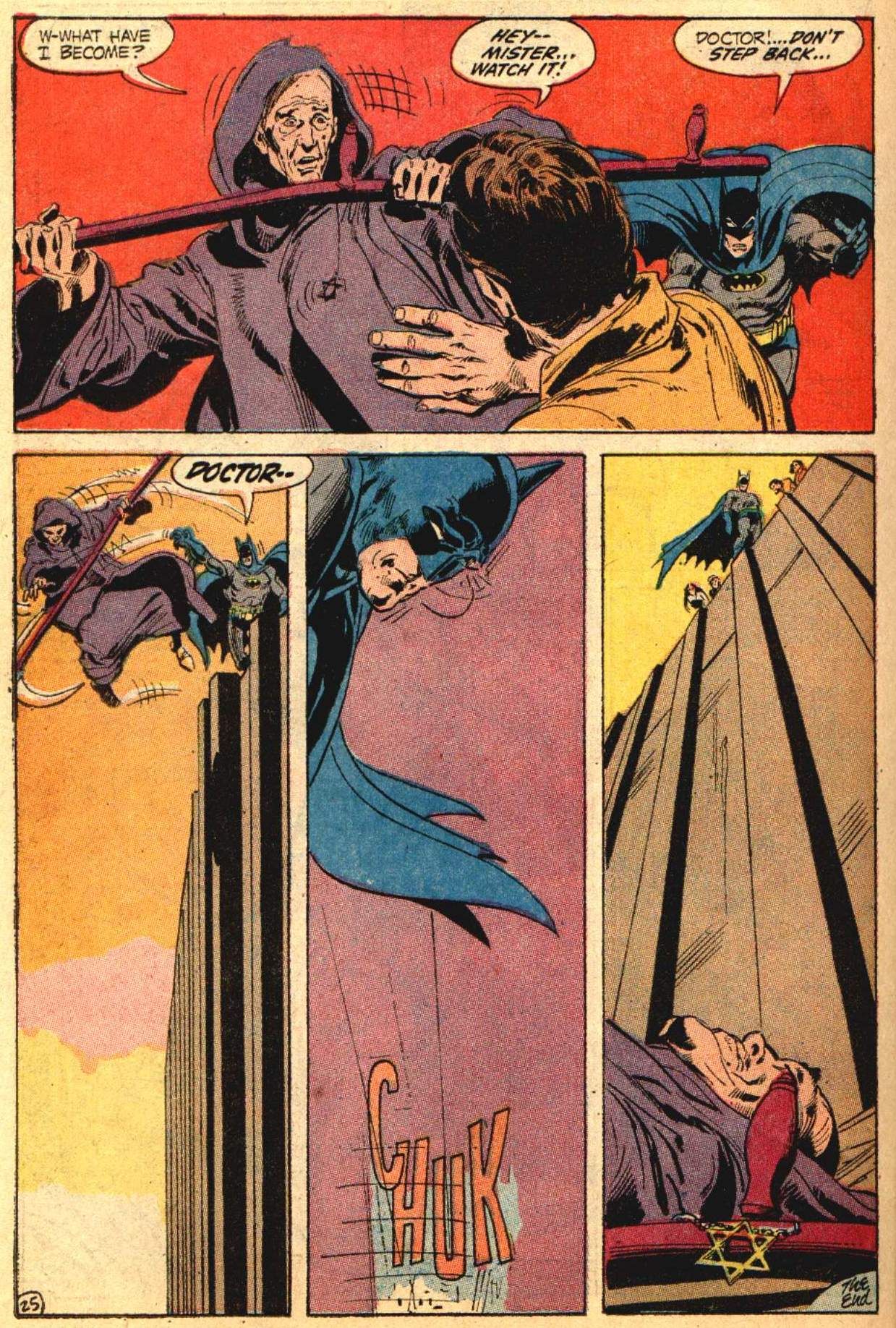Today, we see the epic Batman Halloween story that also surreptitiously involve the Marvel Universe!
This is "Look Back," where every four weeks of a month, I will spotlight a single issue of a comic book that came out in the past and talk about that issue (often in terms of a larger scale, like the series overall, etc.). Each spotlight will be a look at a comic book from a different year that came out the same month X amount of years ago. The first spotlight of the month looks at a book that came out this month ten years ago. The second spotlight looks at a book that came out this month 25 years ago. The third spotlight looks at a book that came out this month 50 years ago. The fourth spotlight looks at a book that came out this month 75 years ago. The occasional fifth week (we look at weeks broadly, so if a month has either five Sundays or five Saturdays, it counts as having a fifth week) looks at books from 20/30/40/60/70/80 years ago.
Today, we head to October 1971 for Batman #237 by Denny O'Neil, Neal Adams and Dick Giordano (based on separate ideas by Bernie Wrighton and Harlan Ellison).
The issue is one of the earliest examples of the series of quasi-crossovers between DC and Marvel involving the Rutland, VT Halloween Parade. You see, comic book fan Tom Fagan (who sadly passed away in 2008) was the organizer behind the Rutland, Vermont Halloween Parade, and since Fagan was into superhero comics, he managed to get the parade to take on a superhero bent. This was well before people dressing as superheroes was normal, so this was a really big deal to the comic book community in the late 1960s/early 1970s, so a lot of comic book writers really appreciated what was going on there. The parade was discussed in comics as early as the letter column in 1964's Detective Comics #327, which, interestingly enough, was the first "New Look" Batman issue...
The parade first made its way into comics in 1970's Avengers #83 (by Roy Thomas, John Buscema and Tom Palmer). Fagan famously wore a Batman costume regularly at the Parade, so in this issue, he's depicted instead wearing a Nighthawk outfit...
Roy Thomas revisited Rutland in 1971 in a Marvel comic, as well, but so, too, did Denny O'Neil, and O'Neil explained the origins of the issue in an extensive piece in the letter column of the issue, which explained that a bunch of comic book professionals traveled to the parade and then...
At one point, Al Weiss, Gerry Conway. Berni Wrightson, Eliot Wagner and myself found ourselves in the forest. It was, I’d guess, midnight. Quiet, except for the odd trillings and gentle stirrings and distant sounds that may have been whistles, wheezes, or groans. And dark. So dark the eye, hungry for something to seem conjured up shapes that loomed in the night.
“You remember that weird dude back at the party?” Berni asked. “That cat with the orange wig?”
Sure, we answered.
“What if he’s a murderer? A maniac? And what if he doesn’t like comix artists and writers? And what if he’s sneaking through the trees right now?”
We heard the rustlings, those stirrings. . .
Later, when we were safely in the midst of the merrymakers again, having completed a rather astonishing run, I promised I’d use Bern’s sadistic fantasy as a Batman plot.
And a few weeks ago. that estimable science-fiction writer and friend; Harlan Ellison, suggested I do a story about Nazi war criminals. I put Harlan’s and Berni’s ideas together and voila! “The Night of the Reaper!”
But most of the credit should go to Tom Fagan and the people of Rutland. Man. that was a good weekend!
Peace —
DENNY O’NEIL
The issue has a stunning Neal Adams cover...
It opens with Dick Grayson (in a Robin "costume") hanging out with Weiss, Wrightson and Gerry Conway as they all attend the parade, which includes Marvel characters as well as DC (plus Captain Marvel from Fawcett Comics)...
Eventually, the young men are attacked and when Robin investigates, he is attacked by a man dressed as the Grim Reaper. He falls and injures himself and Batman helps him, bringing him to the local doctor, who explains that a Nazi war criminal is hiding out in the area (and some of his old Nazi goons are trying to track him down looking for the gold he took with him when he escaped Germany. The people who beat up Robin and his friends are likely those Nazi goons).
While tracking down the Nazi war criminal, Batman interacts with Fagan and some other comic book creators, with O'Neil himself speaking to a guy dressed as Thor in this page, while Len Wein is mocking the guy who is a Spider-Man fan...
The Nazi war criminal is killed by his own fellow Nazis, but Batman figures out that the Reaper is the doctor, who had called the Nazis' old allies here to kill him but then decided to try a more personal approach and was killing former Nazis. Adams' depiction of the Holocaust flashback is stunning...
Despite Batman knowing the truth, the doctor tries to escape, but when he almost knocks a young Jewish man to his death in his escape, he realizes how far he has gone and he instead falls to his own death...
What a stunning looking comic book story and what an interesting idea by O'Neil to combine he two ideas into one!
The great Alan Stewart (who had a blog just about 50-year-old comics) did an extensive spotlight on this issue.
If you folks have any suggestions for November (or any other later months) 2011, 1996, 1971 and 1946 comic books for me to spotlight, drop me a line at brianc@cbr.com! Here is the guide, though, for the cover dates of books so that you can make suggestions for books that actually came out in the correct month. Generally speaking, the traditional amount of time between the cover date and the release date of a comic book throughout most of comic history has been two months (it was three months at times, but not during the times we're discussing here). So the comic books will have a cover date that is two months ahead of the actual release date (so October for a book that came out in August). Obviously, it is easier to tell when a book from 10 years ago was released, since there was internet coverage of books back then.

